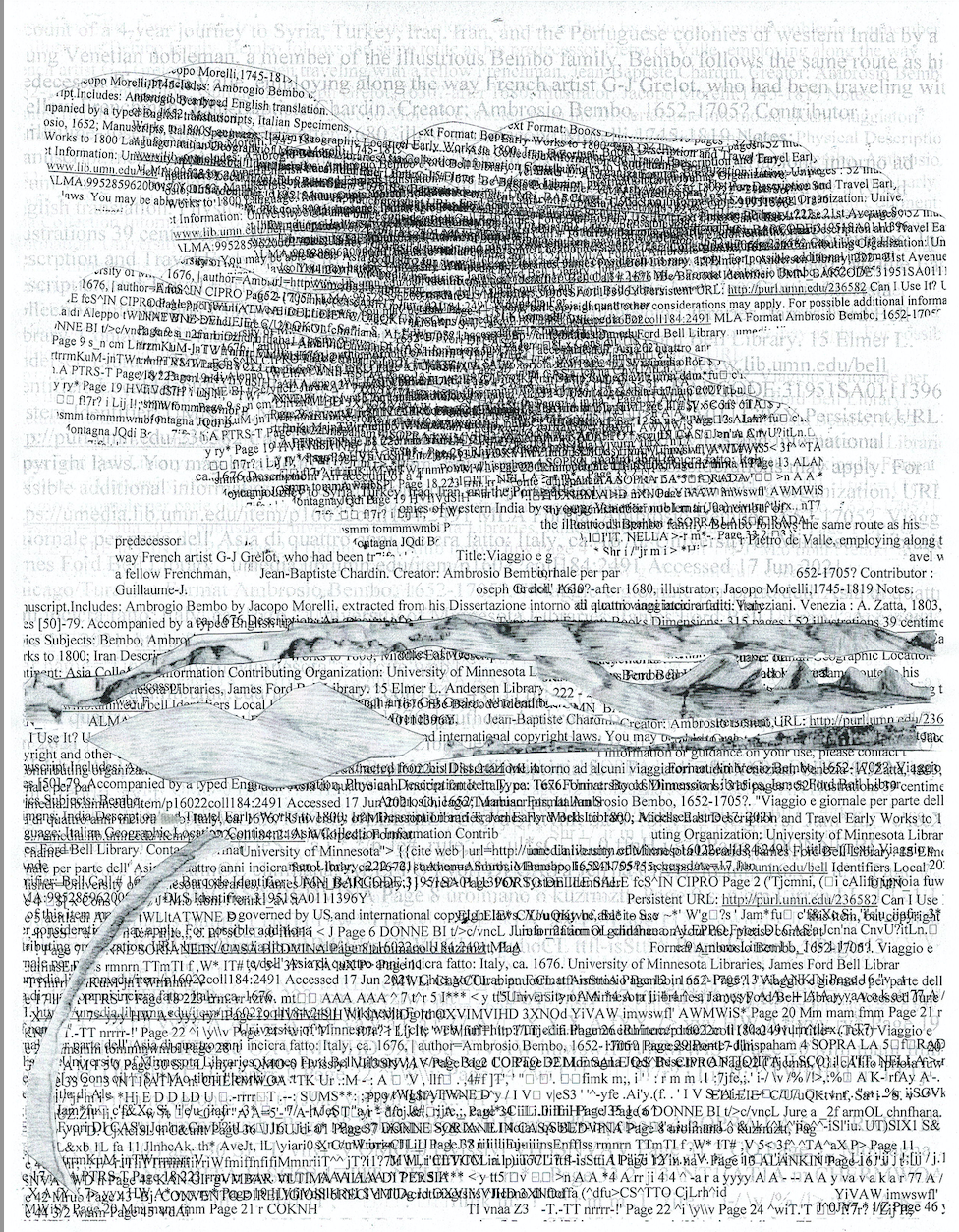Intentionality, Control and Material Choices
Collage composition screenshot.
What is the purpose of an artist to individuals who view their creations? Our understanding of the professions purpose is most likely a highly different perspective from those living in the year 1675. Hired by the Bembo family to document their four year journey to Syria, Turkey, Iraq, Iran and Portuguese colonies of western India. Artist G-J Grelot intentionality was to describe the journey, documenting evidence of the occurrence, but also to clearly identify the visual environment to enable maritime navigation. Whilst serious work, the sun has been drawn with facial features because why not?
An artist was a trade, hired to illustrate a communication. Much of the population was not educated to read or write so they received information visually though painted compositions or stain glass windows at Church. Stories from the bible was commissioned by religious institutions to educate the population to their perspective. Thus, Grelot is controlling his craft and use of materials with a specific intentionality in mind.
The sun’s facial features are evidence of a sprinkling of embellished creativity. An ingredient much more sought after in present day creative activity. Photographic accuracy will replace the requirement for artist documentation in such work, and the role & intentionality of an artist will fundamentally change as a result of camera technology.
Out of context, out of time, 400 odd years after the record(s) creation I am now accessing the information via digital communications. I am not handling the original record, nor even witnessing it. Acting like a wax seal, the digital metadata describes the record(s) context, provenance and the holding library body authority. The authenticity is confirmed, but still the artist would never have dreamed their work being witnessed via digital dialogical connections between technologies.
My creative intentionality requires a higher degree than Grelot (I am assuming!). Ceding that a printer could produce a better-quality replication than my drawing, I started to collage the composition with the finding aid metadata (as described above). Merging the informational value within the authority description. The process requires losing control of the mark making, tearing the paper with scissors or by hand inevitably produces random results.
Our mark making is fundamentally different, Grelot clean descriptive lines joining my uncontrolled chaotic marks. Yet by action our intentionality is the same but with contrasting purposes. We are both creating compositions evidencing what we have visually witnessed. Grelot communicating an actual scene, myself communicating the actual scene via digital metadata using a similar technique I used to construct St Pauls Survives composition.
The watercolor materials I used were so totally different from the paper collage that these could not be physically merged (without comprising quality). This led me to morphing the documentation of the layers. This action has created a unique composition but where is the art? The layers exist physically, but the final art object exists in virtual form. How the data is compressed, saved, shared, also constantly alters the visual image. The website uses a screenshot which retains a bright tone, the PDF version preserves the digital data for longevity however is significantly tonally darker.
PDF version of the same image.







